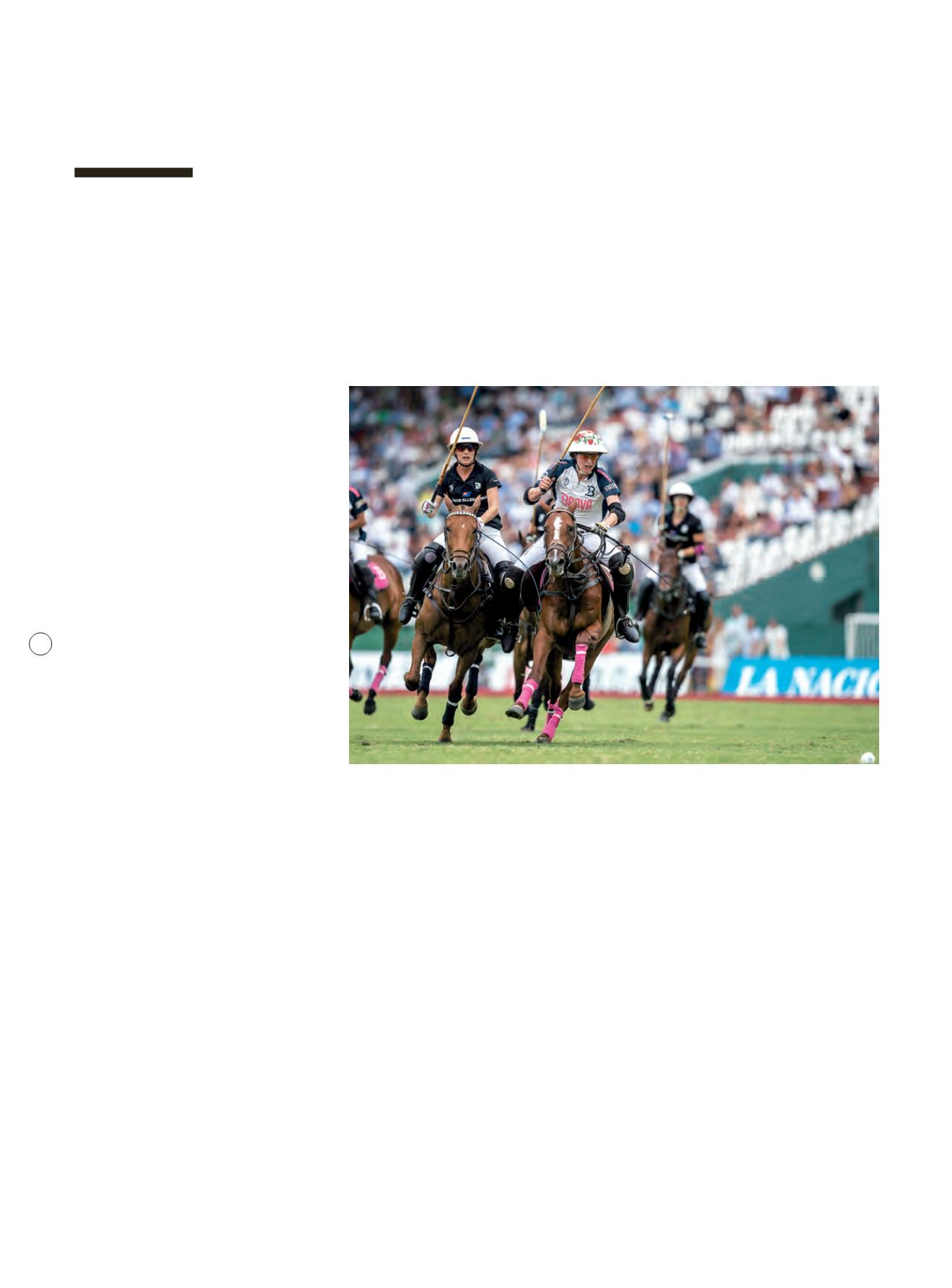
hurlinghampolo.com
36
TO N Y R A M I R E Z / I M A G E S O F P O LO. C O M
women’s polo. There are women fully
employed year-round as professionals and
there are many more who want to follow
in those footsteps. Another reason women’s
polo has gained popularity is that many
people find the more classic traditional style
more enjoyable to play and watch; women’s
games are very straightforward… up and
down the field without much intentional
stopping and slowing of the flow of play.’
Of course, increased popularity means
a more distinguished breed of sponsors. Last
year, Swarovski became the first exclusive
partner of the England Ladies Polo Team,
supporting them for the 2017 season in two
international test matches against the USA:
the Cirencester Ladies International in June
and the Coronation Cup at Guards in July.
It was the first time that an all-ladies team
competed at the Coronation Cup – one of
the biggest fixtures in the British polo
calendar. And in June 2017, Nadja Swarovski
presented the inaugural Most Outstanding
Lady Player award to Hazel Jackson at the
Polo Awards.
‘In general, corporate sponsors tend to
gravitate towards high-goal and women’s
polo,’ explains Brennan. ‘I believe they find
women’s polo appealing for two reasons: it
is more unique and there is a lot of buying
power. Women tend to be the decision makers
and make most of the household purchases.’
One of the things that almost all of the
top female players have in common seems to
be a polo ancestry. Aside from the illustrious
Hales, there are the Cambiasos, the Clarkins
and the Tomlinsons. When asked if a polo
pedigree was necessary for a career in the
sport, Milagros Fernández Araujo (who
won the first ever Women’s Open Polo
Championship in Palermo last December)
replies, ‘I’ve ridden horses since I was very
young. At first, I didn’t like polo. When
I was 11 years old, I started playing with
my dad [the former 10-goal player and
three-time Argentine Open champion, Milo
Fernández Araujo] and my sister, and every
time, I liked it more. As time went by we
played more and more tournaments, and
so we improved every time.
‘Although it is true that it is better to
start as a child, I believe that if you fight for
what you really want, with effort you can
reach it,’ concludes Fernández Araujo.
So why, when we hear the words “polo
player” do we still think of the strapping,
Argentine male stereotype? Well, it’s
certainly true that the sport has historically
been dominated by men. And the top five
players in the world are all from Argentina
and carry a Y chromosome. But, according
to the latest survey by the British Equestrian
Trade Association (BETA), women represent
74 per cent of the riding population. In 2015,
there were an estimated 962,000 female
regular riders compared with 348,000 males.
At a time when gender equality is at the
top of every sports governing body’s agenda
(here’s looking at you, FIA Formula One)
doesn’t it seem only right to celebrate a sport
like polo? A sport where a woman can
compete alongside and against a man,
knowing that her worth is based solely on
her skill, passion, and determination. Oh,
and her ponies, of course.
T H E S P O R T H A S H I S T O R I C A L LY
B E E N D OM I N AT E D B Y ME N B U T
WOME N R E P R E S E N T 74 P E R C E N T
O F T H E R I D I N G P O P U L AT I O N
Nina Clarkin (below,
right) currently has
the highest women’s
handicap of 10


